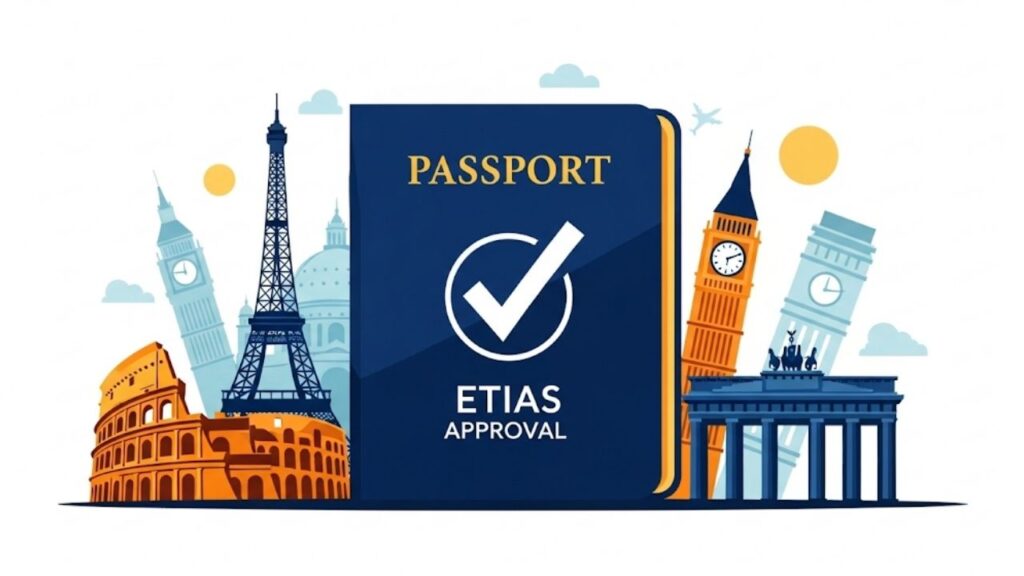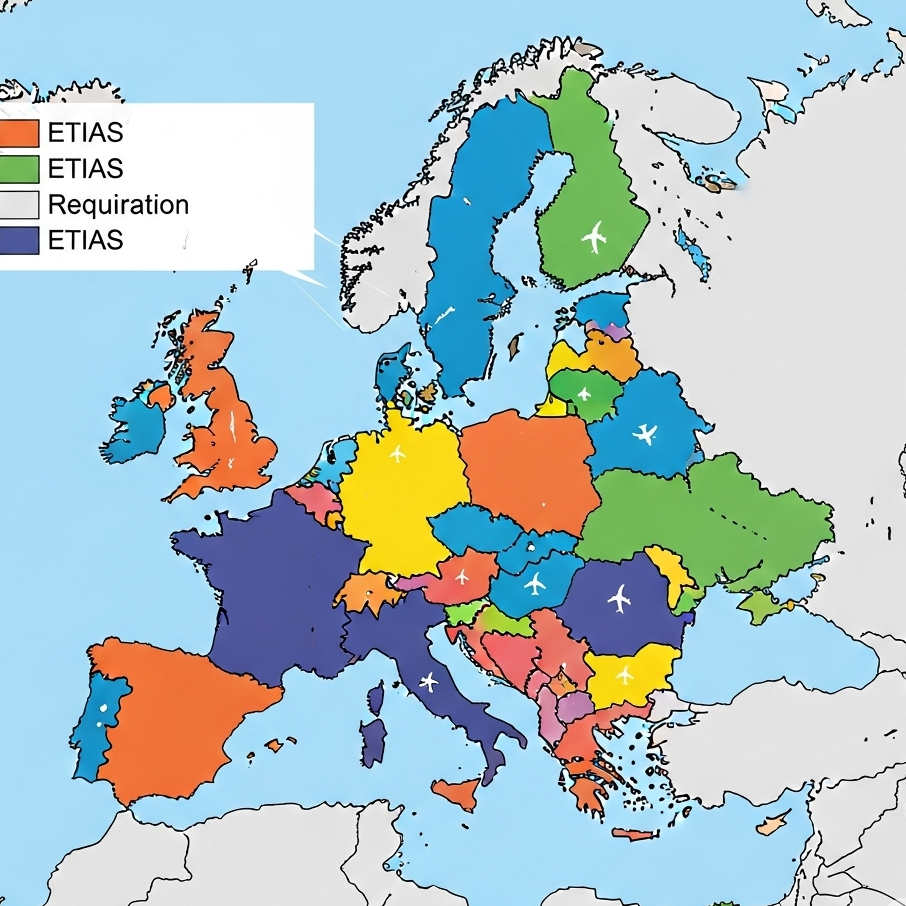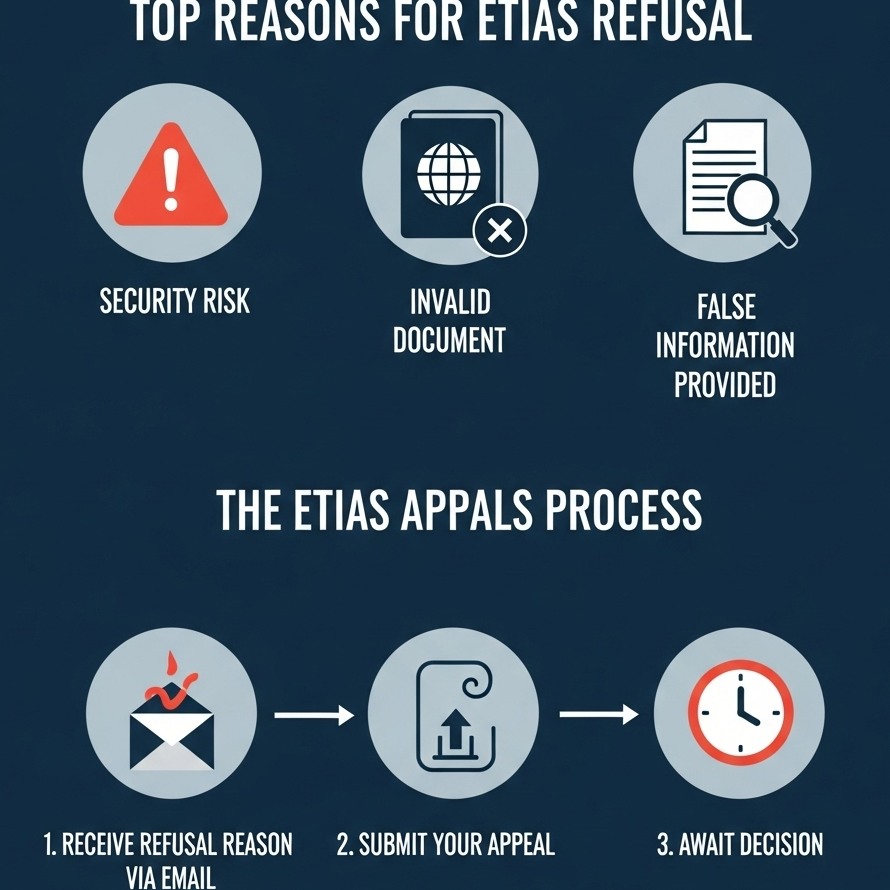Navigating the upcoming EU visa-free travel restrictions might seem daunting, but it doesn’t have to be. For millions of travellers who currently enjoy visa-free access to many European countries, a new system called the European Travel Information and Authorisation System (ETIAS) will soon become a mandatory step. This guide is designed to demystify the ETIAS process, providing you with clear, actionable steps and the confidence to plan your European adventures without a hitch. Think of it not as a barrier, but as a new key to unlock the wonders of Europe.

EU visa-free travel restrictions
| Key Fact | Detail | Official Source |
| What It Is | An electronic travel authorisation, not a visa, for visa-exempt nationals. | European Union |
| Official Launch | Expected to be operational in the last quarter of 2026. | EEAS |
| Application Fee | €7, but free for travellers under 18 or over 70 years old. | European Union |
| Validity | Valid for up to three years, or until your passport expires. | European Union |
The introduction of ETIAS marks a significant change in the landscape of EU visa-free travel restrictions, but it is a manageable one. By understanding the requirements, preparing in advance, and using the official resources, you can ensure your travels to Europe remain as exciting and accessible as ever. The key is to be informed and proactive. Start by checking your passport’s validity and bookmarking the official ETIAS website. Your next European adventure awaits!
What Exactly is ETIAS and Why is it Being Introduced?
For years, citizens of countries like the United States, Canada, the United Kingdom, and Australia have enjoyed the privilege of entering the Schengen Area with just a valid passport for short stays. To enhance security across the region, the European Union is implementing the European Travel Information and Authorisation System (ETIAS).
It’s crucial to understand that ETIAS is not a visa. Rather, it’s a pre-travel screening and authorisation for nationals of visa-exempt countries. The system will conduct checks against various EU information systems for security and migration, helping to identify any potential risks before travellers even arrive at the border. In my experience advising on travel regulations, I’ve seen how similar systems in other parts of the world have streamlined border processes while enhancing security, and ETIAS aims to do the same for Europe.
This new requirement will apply to travel to 30 European countries. These include the 27 countries in the Schengen Area, such as France, Germany, Italy, and Spain, as well as Bulgaria, Romania, and Cyprus.

Who Needs to Apply for ETIAS?
The new rules will affect a large number of travellers. If you are a national of a country that currently has a visa-waiver agreement with the Schengen Area, you will need to apply for ETIAS. This includes, but is not limited to, citizens of:
- The United States
- The United Kingdom
- Canada
- Australia
- New Zealand
- Japan
- South Korea
- Brazil
- Mexico
The European Union has published a full list of the countries whose nationals will require an ETIAS. It’s always a good idea to check this official list to be certain of your requirements.
Your Step-by-Step Guide to the ETIAS Application
The good news is that the ETIAS application process is designed to be straightforward and entirely online. Here’s what you can expect:
1. Prepare Your Documents
Before you start, make sure you have the following to hand:
- A valid passport with at least three months of validity beyond your intended stay.
- A credit or debit card to pay the €7 application fee.
2. Access the Official ETIAS Website
This is a critical step. The application must be completed on the official ETIAS website: travel-europe.europa.eu/etias. Be wary of unofficial websites that may charge extra fees or misuse your personal data. The official portal is secure and is the only channel for a legitimate application.
3. Fill Out the Online Form
The application form itself is expected to take around 10-20 minutes to complete. You will need to provide:
- Personal Information: Your full name, date and place of birth, nationality, and parents’ names.
- Passport Details: The number, issue date, and expiry date of your passport.
- Contact Information: Your email address and a phone number.
- Travel Plans: The first EU country you intend to visit.
- Background and Security Questions: You will be asked questions regarding your health, criminal record, and any past travel to conflict zones.
4. Pay the Fee and Submit
Once you have filled in all the required information, you will need to pay the €7 fee. Remember, this fee is waived for applicants who are under 18 or over 70 years old.
5. Receive Your Authorisation
In most cases, applications will be processed and a decision will be delivered via email within minutes. However, in some instances where further checks are needed, it could take up to 30 days. It is therefore highly advisable to apply well in advance of your travel dates.
Your approved ETIAS will be electronically linked to your passport. It will be valid for three years, or until your passport expires, whichever comes first. During this period, you can make multiple short-term visits to the ETIAS countries, generally for up to 90 days within any 180-day period.
What if My ETIAS Application is Denied?
While the vast majority of applications are expected to be approved quickly, a refusal is possible. The most common reasons for denial include:
- Having a passport that has been reported as lost or stolen.
- An alert being present in the Schengen Information System (SIS).
- Providing incomplete or fraudulent information.
- Being considered a security or public health risk.
If your application is denied, you will receive an email explaining the reason for the decision. This email will also provide information on how you can appeal the decision. A denial does not necessarily mean you can never travel to Europe, but you will need to address the issues raised or potentially apply for a full visitor visa.

Navigating US Immigration Enforcement: Understanding and Responding to Deportations
FAQs
Q1:When do I need to have an ETIAS?
The ETIAS system is expected to be fully operational in the last quarter of 2026. The European Union will provide ample notice before it becomes mandatory.
Q2:How long before my trip should I apply for ETIAS?
While most applications are processed in minutes, it is recommended to apply at least 72 hours before your departure. If additional information is required, the process could take longer.
Q3:Do I need a separate ETIAS for each country I visit?
No, a single approved ETIAS is valid for all 30 European countries that require it.
Q4:What if I get a new passport?
Your ETIAS authorisation is linked to your passport. If you get a new passport, you will need to apply for a new ETIAS.
Q:Is ETIAS the same as a Schengen Visa?
No. ETIAS is a travel authorisation for visa-exempt nationals for short stays. A Schengen visa is for nationals of countries who are required to have a visa to enter the Schengen Area. The application processes and requirements are different.










